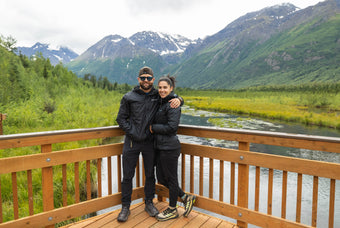Lorem ipsum dolor sit amet
Insulated Outerwear – Down, Fleece & Synthetic Material Comparison

Insulated Outerwear – Down, Fleece & Synthetic Material Comparison
 Insulation plays a critical role in outdoor layering systems. Its primary functions are to trap body heat, block cold air, and help wick moisture away from your body. The three most common types of insulating materials are down, fleece, and synthetic fills. Here's how they compare so you can choose the right outerwear for your next adventure.
Insulation plays a critical role in outdoor layering systems. Its primary functions are to trap body heat, block cold air, and help wick moisture away from your body. The three most common types of insulating materials are down, fleece, and synthetic fills. Here's how they compare so you can choose the right outerwear for your next adventure.
Insulation Materials
Down
Pros: Down is one of the best natural insulators available. It’s lightweight, highly compressible, and offers exceptional warmth-to-weight ratio—perfect when pack space is limited.
Cons: Down must stay dry to retain its insulating properties. When wet, it clumps and loses effectiveness. That’s why it's best used in dry conditions or as part of a waterproof/breathable system.
Understanding Down Fill Power
Fill power measures the loft—or fluffiness—of the down, which translates to its ability to trap air and provide warmth. Fill power is measured in cubic inches per ounce (in³/oz):
- 400–450: Medium quality
- 500–550: Good quality
- 550–750: Very good quality
- 750+: Excellent quality
Higher fill power means lighter, more compressible, and warmer garments—ideal for serious outdoor use.
Fleece
Pros: Fleece dries quickly, is lightweight, and is comfortable for active use. It's excellent for layering and offers breathability during rigorous activities.
Cons: Fleece is not windproof or waterproof. It also tends to be bulky, which can make packing more of a challenge.
Wind-Blocking Fleece
To address fleece’s wind vulnerability, some garments include built-in windproof barriers—great for windy, cool conditions where a shell may not be needed.
Synthetics
Synthetic insulation performs well even when wet. It dries reasonably fast, provides consistent warmth, and is typically more affordable than down. Though less compressible, it’s a dependable choice in wet, variable weather.
Choosing What to Wear
Be Prepared for Weather
In winter, getting wet can be dangerous. Always plan ahead and prioritize warmth and dryness. Select insulation based on the likelihood of precipitation and your activity level.
Know How Hot You’ll Get
For high-output activities (like hiking or peak bagging), fleece or a breathable synthetic jacket is ideal. In dry, cold environments, down or windstopper fleece is a solid option. Remember that women, older individuals, and thinner people may need warmer layers than others.
Proper Layering
Layering works best when you actively manage it. Remove layers before you sweat, and add layers when you cool down. This keeps you dry and comfortable—two key factors in staying warm.
Whether you need compressible warmth, moisture resistance, or active comfort, Campmor has the outerwear to keep you protected. Shop our selection of jackets and layer up the smart way for every season and condition.







